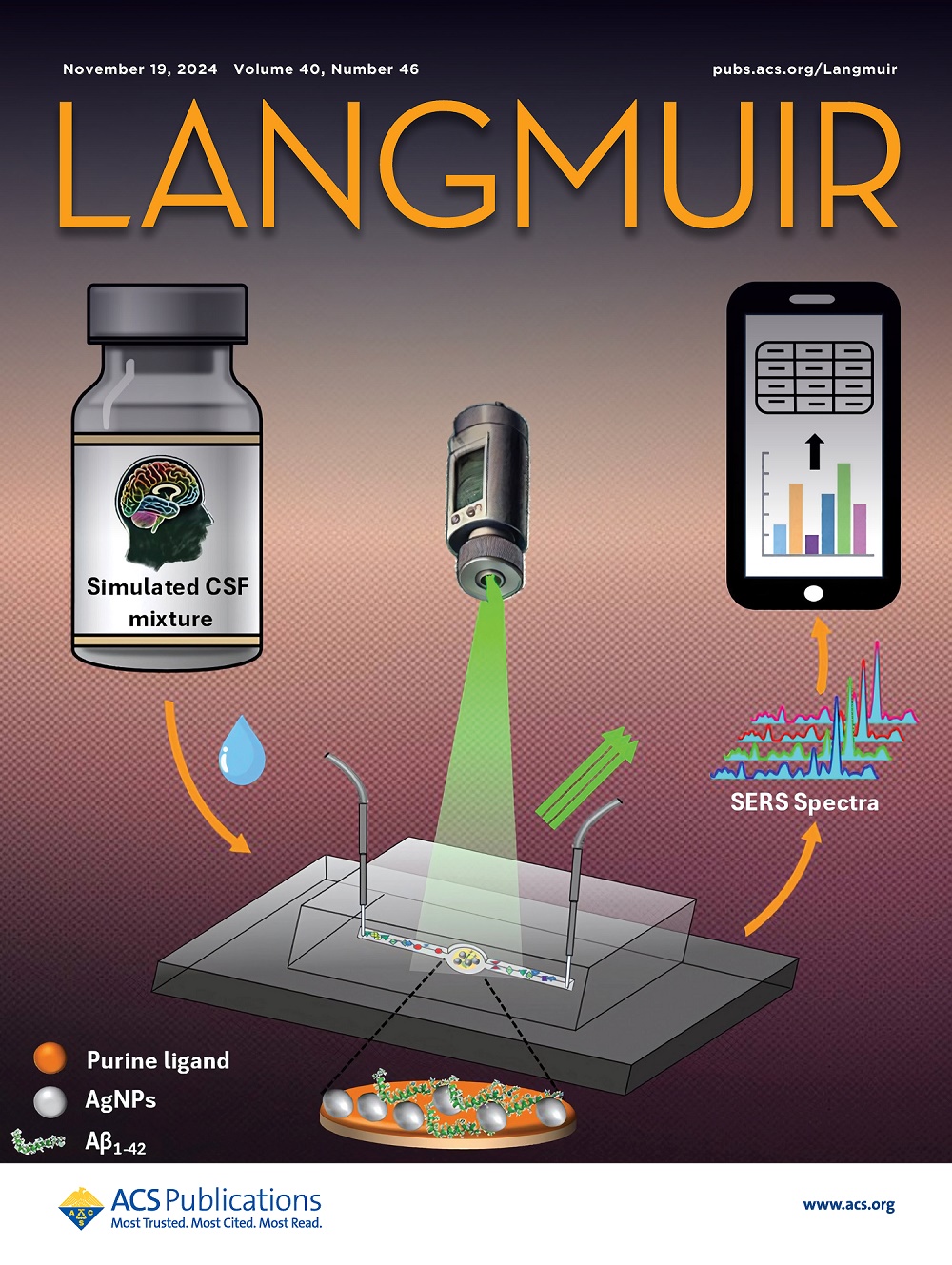Measurement and Enhancement of Coalescence-Induced Droplet Jumping in the V-Shaped Superhydrophobic Trench with a Curved Ridge.
IF 3.7
2区 化学
Q2 CHEMISTRY, MULTIDISCIPLINARY
引用次数: 0
Abstract
Coalescence-induced droplet jumping demonstrates significant potential for diverse applications. However, current studies on enhancing and regulating droplet jumping largely focus on specific droplet locations and enhancement structures, significantly restricting their broader applications. This study introduces a V-shaped superhydrophobic trench with a curved ridge to enhance and control droplet coalescence jumping and directional transfer. Experimentally, a dimensionless jumping velocity (Vj* ≈ 0.69) and energy conversion efficiency (η ≈ 42.13%) were achieved, representing about 111.63% improvement in energy conversion efficiency compared to the V-shaped trench and an 879.77% increase relative to planar superhydrophobic surfaces, with a jumping angle of 66°. Numerical simulations and experiments revealed that the curved ridge enhances droplet coalescence jumping velocity and enables directional control by redirecting velocity vectors and minimizing viscous loss during coalescence. Additionally, the effects of ridge length, height, width, and opening angle on droplet coalescence jumping were analyzed via numerical simulations, offering theoretical support and technical guidance for practical applications. The coalescence jumping of droplets with unequal sizes on curved ridge structures was also studied, demonstrating that droplets with radius ratios below 0.66 can bounce off trench surfaces, confirming the structure's general applicability. This study further proposes a droplet velocity measurement method integrating target detection and trajectory fitting, achieving efficient and precise droplet velocity determination.弯脊v型超疏水沟槽中聚结诱导液滴跳跃的测量与增强。
聚结诱导的液滴跳跃显示出巨大的应用潜力。然而,目前关于增强和调节液滴跳跃的研究主要集中在液滴的具体位置和增强结构上,严重限制了其广泛应用。本文提出了一种带有弯曲脊的v型超疏水沟槽,以增强和控制液滴的聚结跳跃和定向传递。实验结果表明,在跳变角度为66°的情况下,与v型沟槽相比,能量转换效率提高了约111.63%,能量转换效率提高了879.77%,无量纲跳变速度Vj*≈0.69,能量转换效率提高了42.13%。数值模拟和实验结果表明,弯曲脊提高了液滴聚结跳跃速度,并通过改变速度矢量方向和减小聚结过程中的粘滞损失实现了定向控制。通过数值模拟分析了脊长、脊高、脊宽和开口角度对液滴聚结跳跃的影响,为实际应用提供了理论支持和技术指导。研究了不等大小液滴在弯曲脊状结构上的聚结跳跃现象,表明半径比小于0.66的液滴可以在沟槽表面反弹,证实了该结构的普遍适用性。本研究进一步提出了一种集目标检测和轨迹拟合于一体的液滴速度测量方法,实现了高效、精确的液滴速度测定。
本文章由计算机程序翻译,如有差异,请以英文原文为准。
求助全文
约1分钟内获得全文
求助全文
来源期刊

Langmuir
化学-材料科学:综合
CiteScore
6.50
自引率
10.30%
发文量
1464
审稿时长
2.1 months
期刊介绍:
Langmuir is an interdisciplinary journal publishing articles in the following subject categories:
Colloids: surfactants and self-assembly, dispersions, emulsions, foams
Interfaces: adsorption, reactions, films, forces
Biological Interfaces: biocolloids, biomolecular and biomimetic materials
Materials: nano- and mesostructured materials, polymers, gels, liquid crystals
Electrochemistry: interfacial charge transfer, charge transport, electrocatalysis, electrokinetic phenomena, bioelectrochemistry
Devices and Applications: sensors, fluidics, patterning, catalysis, photonic crystals
However, when high-impact, original work is submitted that does not fit within the above categories, decisions to accept or decline such papers will be based on one criteria: What Would Irving Do?
Langmuir ranks #2 in citations out of 136 journals in the category of Physical Chemistry with 113,157 total citations. The journal received an Impact Factor of 4.384*.
This journal is also indexed in the categories of Materials Science (ranked #1) and Multidisciplinary Chemistry (ranked #5).
 求助内容:
求助内容: 应助结果提醒方式:
应助结果提醒方式:


